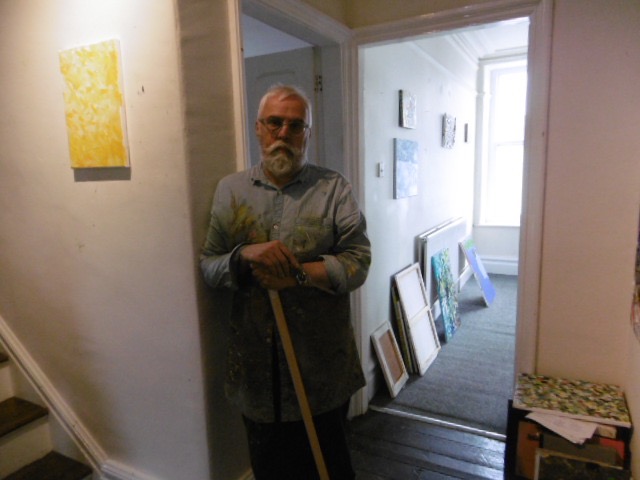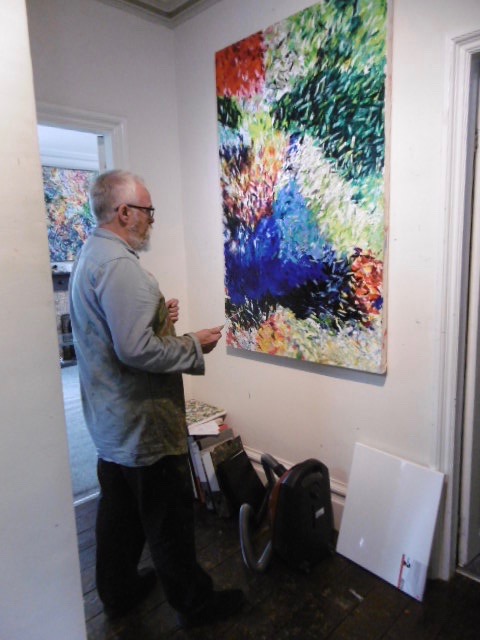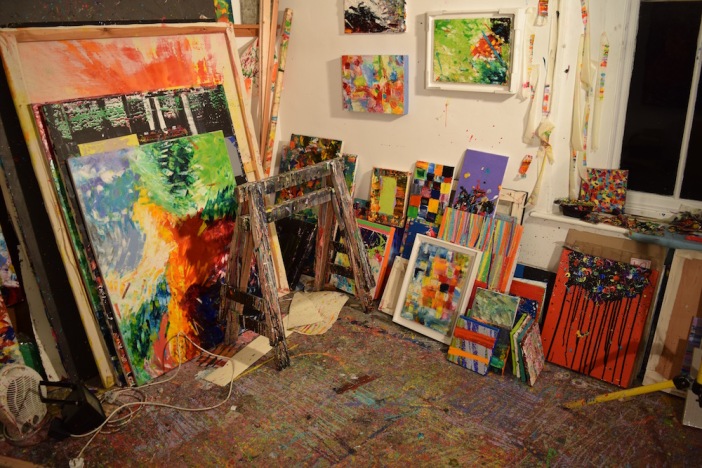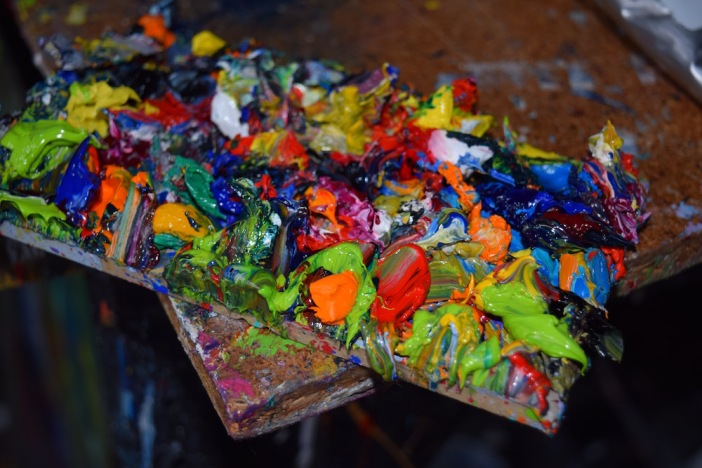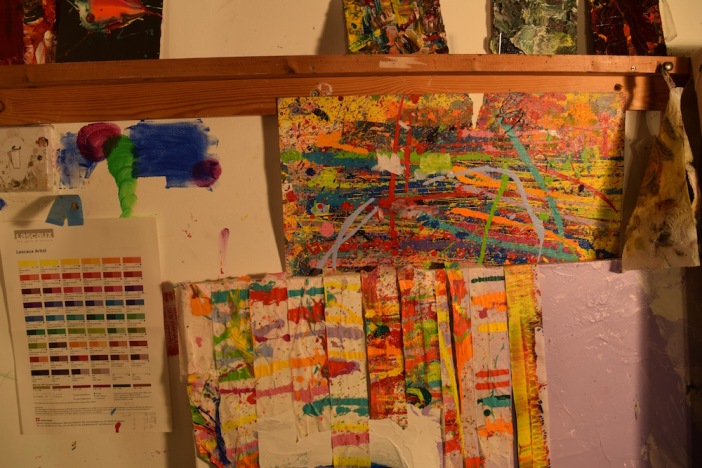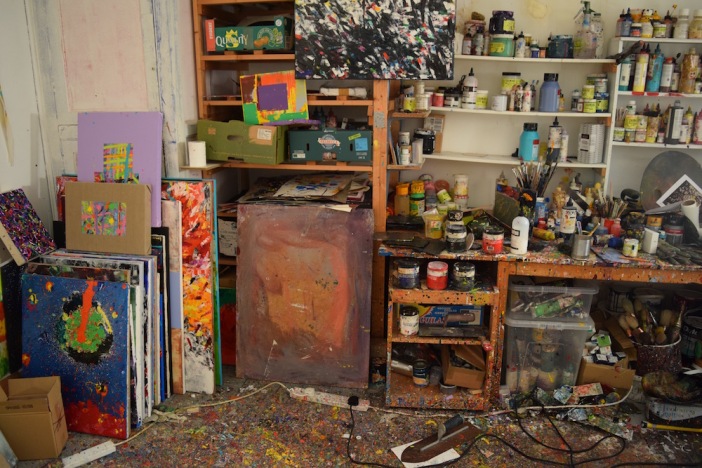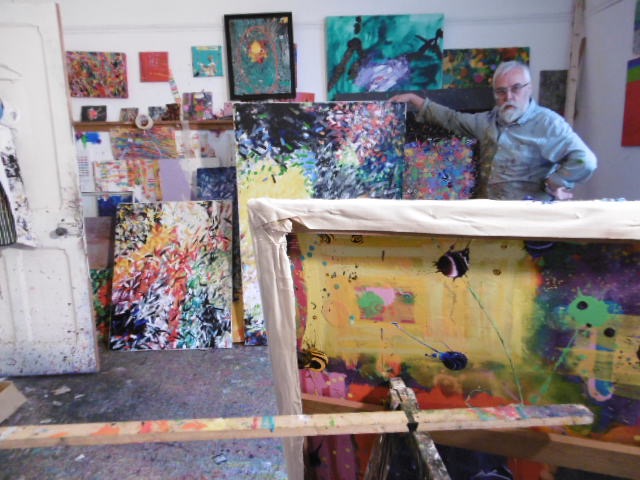John, talking to himself about 25 years ago…..
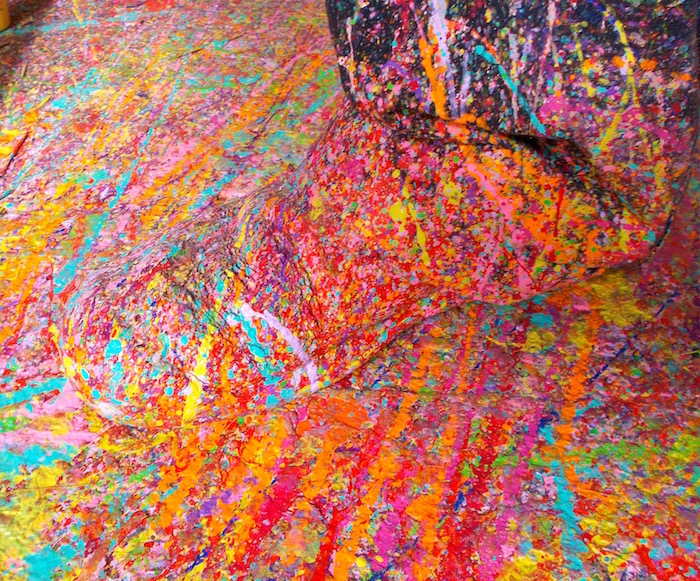
“Well that’s going to be very expensive”
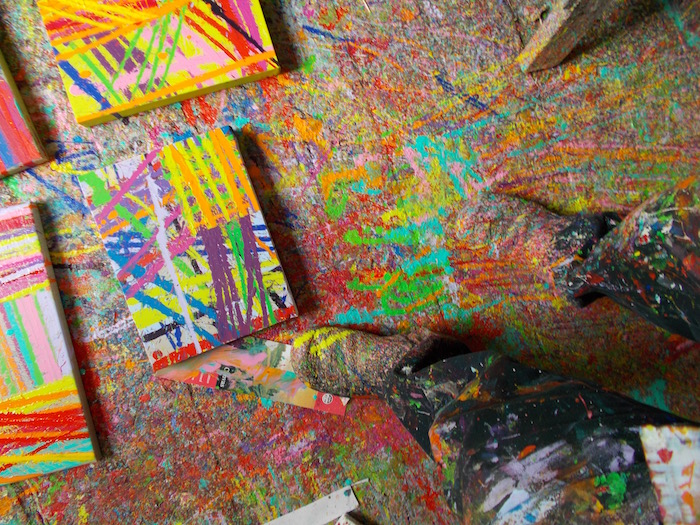
“I’ll make my own”…
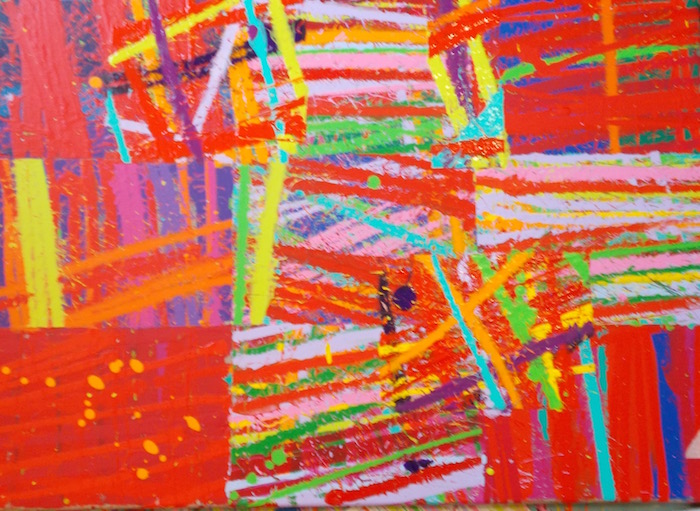
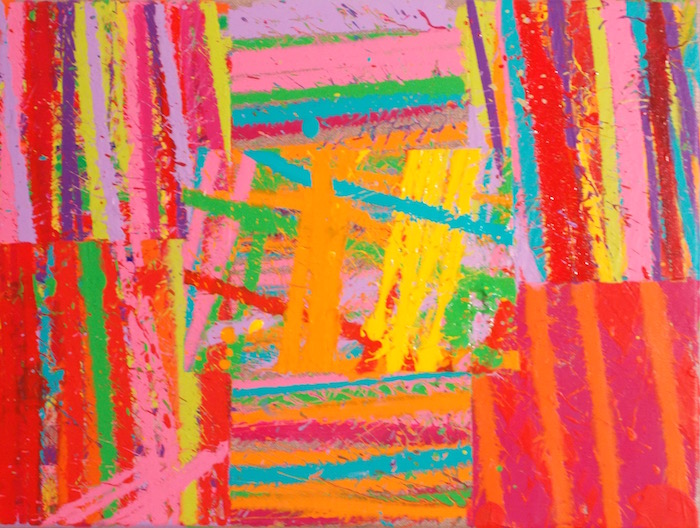
From one storeroom to another…
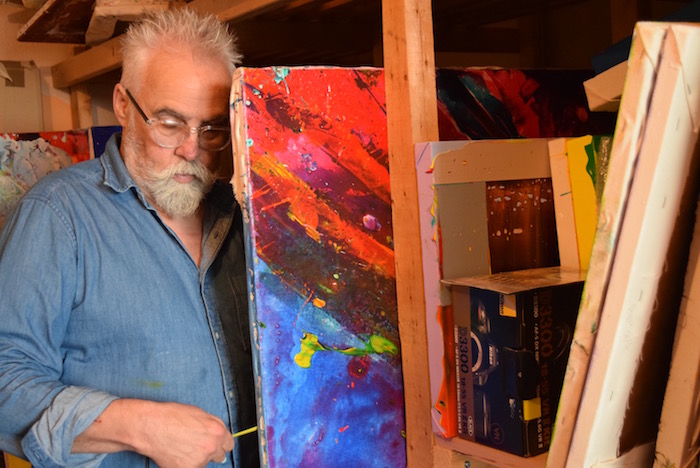
But will they fit in the car?
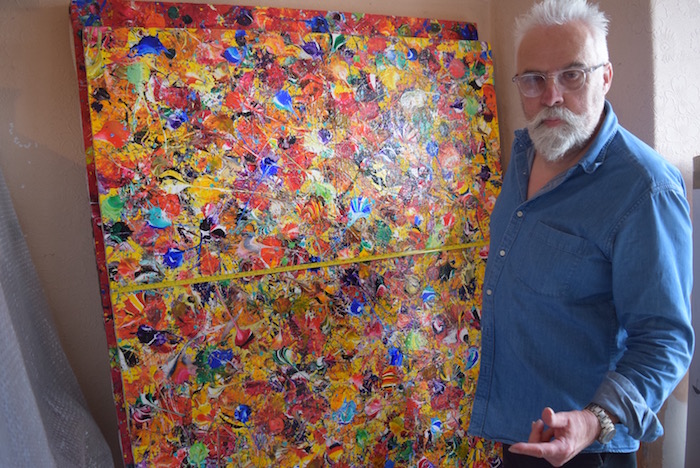
Falling light illuminates the painting like a stained glass window… layers of paint and varnish applied using a plasterer’s float.
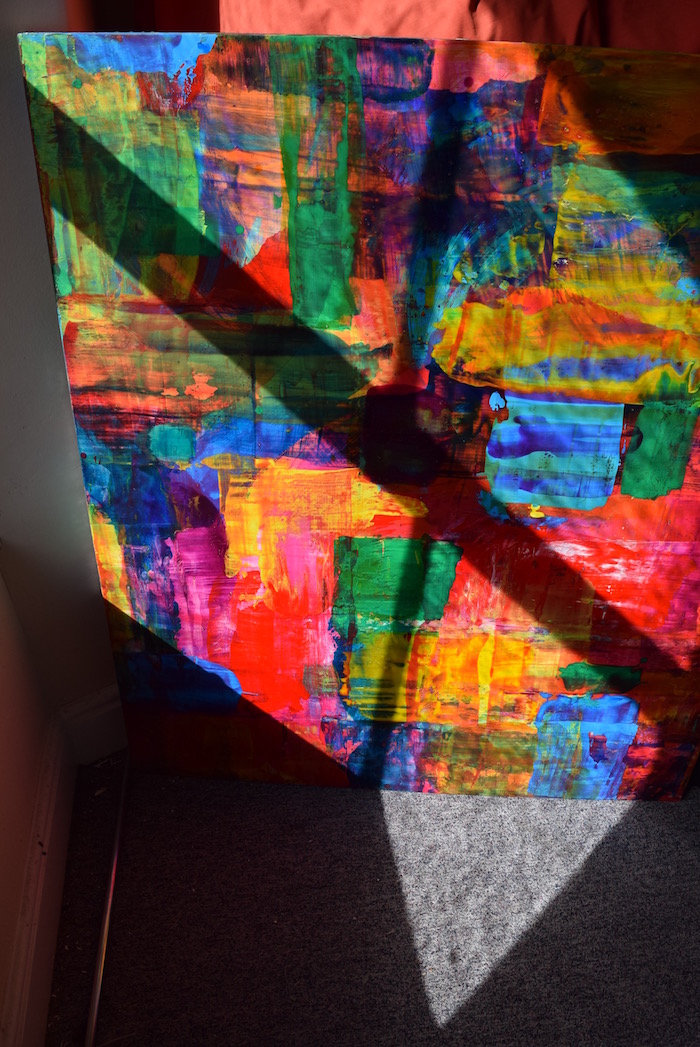
These paintings were exhibited at the University of Central Lancashire in 2004. The move makes John reflect on his Francis Bacon influenced work..
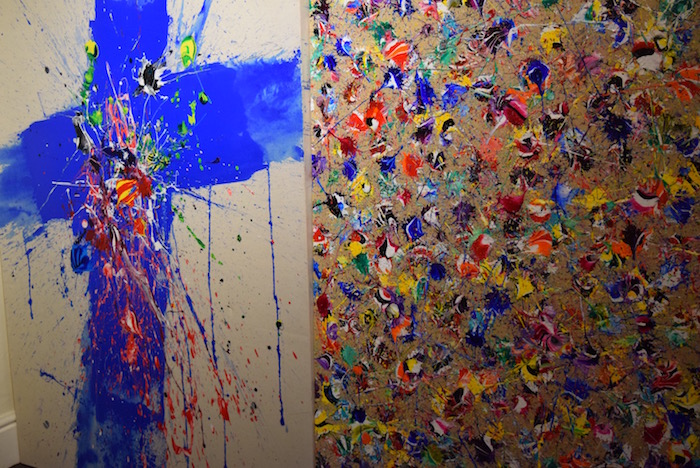
Francis Bacon re Cimabue Crucifix – “A worm crawling down a cross”
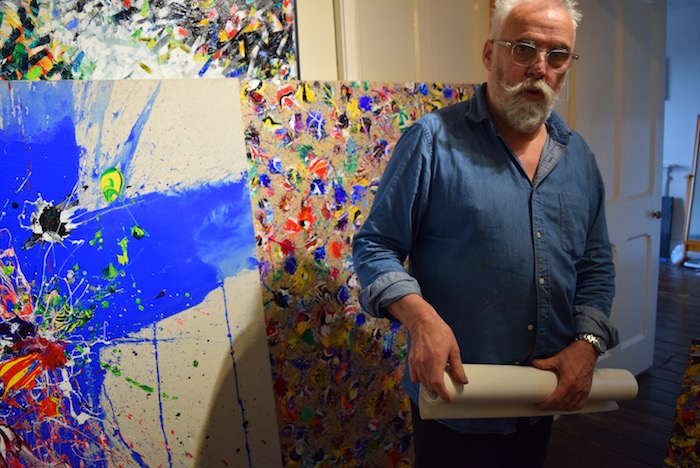
Memories…
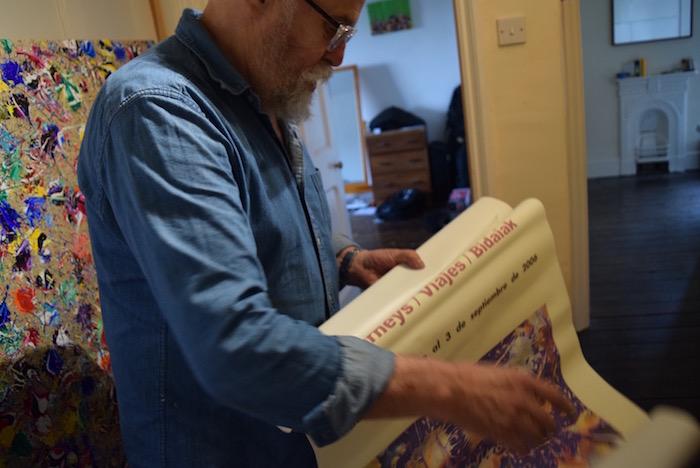
John and his work looking ‘right at home’ amongst victorian antiques and furnishings…
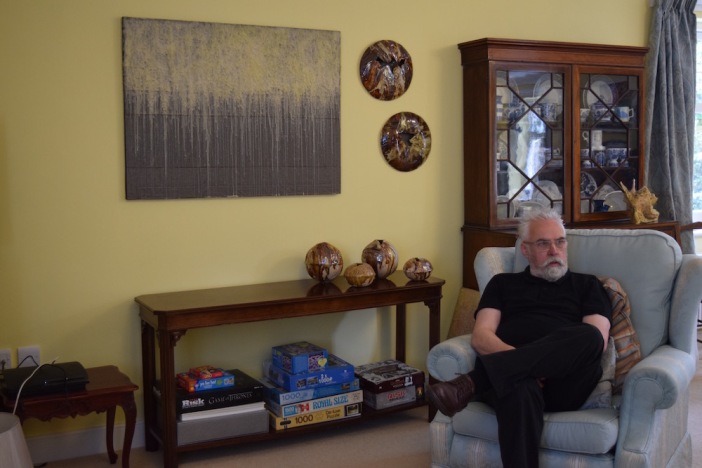
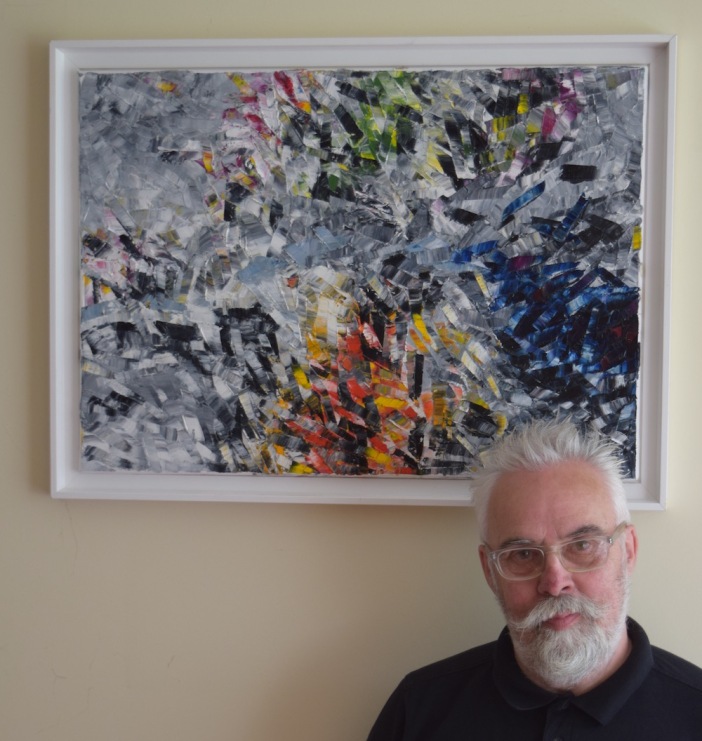
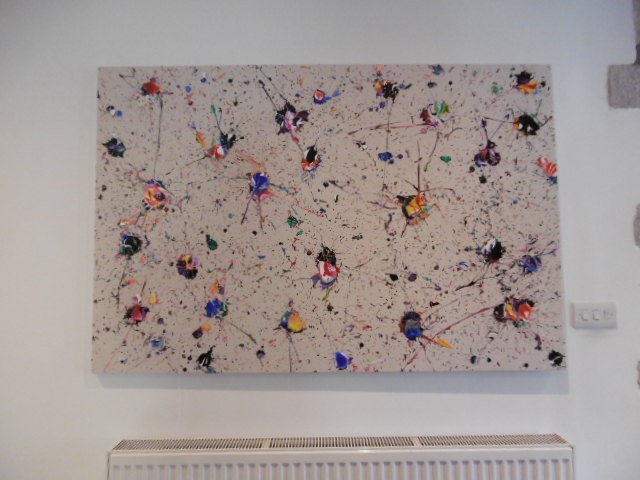

Silverdale and Arnside Art and Craft Trail 2016.
Venue 22, Swiss Cottage, Silverdale, LA5 0RS
(It was the last weekend in June…)
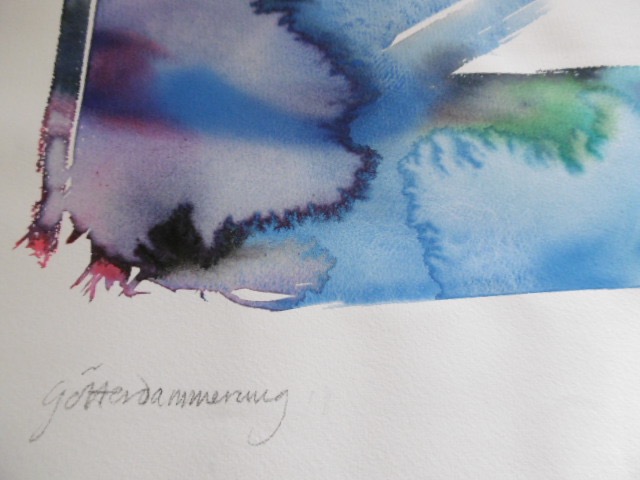
Dialogue from Michael Kenny, R.A. London 1994
John Baldwin – Recent paintings
Watercolour is a medium of fluidity and uncertainty, the substance of spontaneity and intuition. In John Baldwin’s art it is the wet pool of colour that spreads and searches across the paper, creating as it goes a world of deliquescent form. It is mysterious – at once existing as a smear of paint on paper and at the same time an interior world.
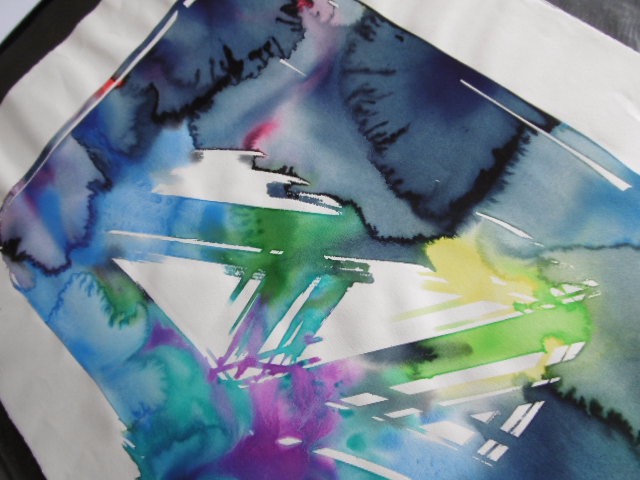
The purity and simplicity of the series ‘Nostalgia for Tomorrow’ seems to reflect the uncertainty and acceptance, which is in the nature of watercolour. The image exists as the memory of the impact of liquid upon a surface – the memory of a frozen moment.

The series “Gotterdammerung’ involves a more structured composition, the paint brushed rather than bled onto the paper and, in some ways, may be seen to lead to the opacity and compositional stillness of the new pastel paintings.
Baldwin’s watercolours fit firmly into what has become an abstract expressionist tradition. One can see this particularly in the large and splendid ‘Blencathra.’ Out of this tradition he has developed his own distinctive imprint. His is a peculiarly English expressionism. Living as he does in the Lake District, I am reminded of his commitment to what Wordsworth described as ‘a wise passiveness.’ Sometimes art reflects life, and in Baldwin’s work his concern is with a spiritual content arrived at intuitively. It is spirituality quite distinct in meaning from religiosity, being more concerned with a commitment to higher moral values – a form of humanism if you like. It is the spirituality that Mark Rothko had in mind when he wrote in 1945:
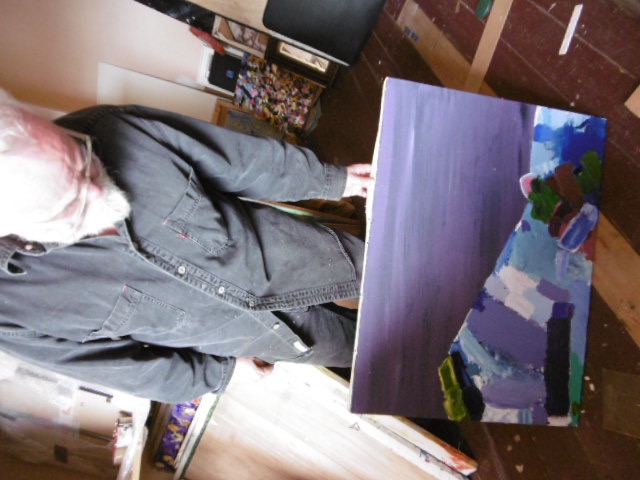
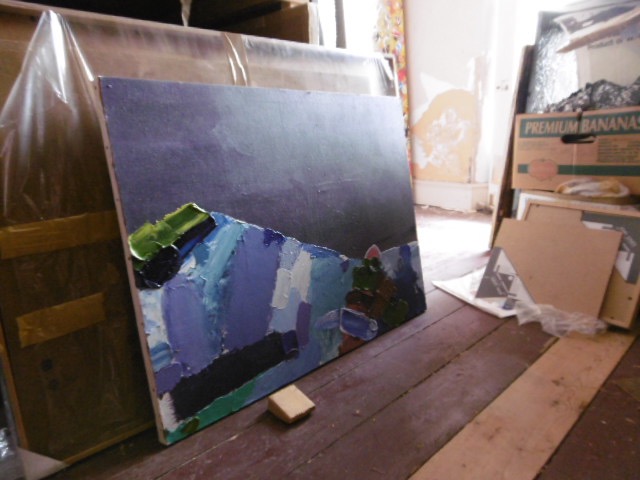
‘For art to me is an anecdote of the spirit and the only means of making concrete the purpose of its varied quickness and stillness,’
This is the spirituality to which Baldwin alludes in his painting and refers to his conversation. His belief that ideas of a supra-material nature are in the historical forefront of abstract painting is confirmed in Kandinsky’s ‘Concerning the Spiritual in Art’ (first published in Germany in 1912), and it is in a sense this tradition which began with Kandinsky, that Baldwin seeks to maintain.
John Baldwin has produced in this exhibition a beautiful and rewarding collection of work.
Michael Kenny, R.A.
London 1994
Of the Living Room…
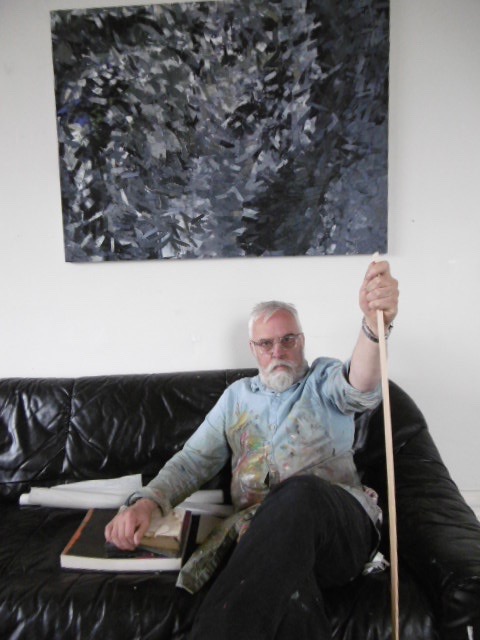

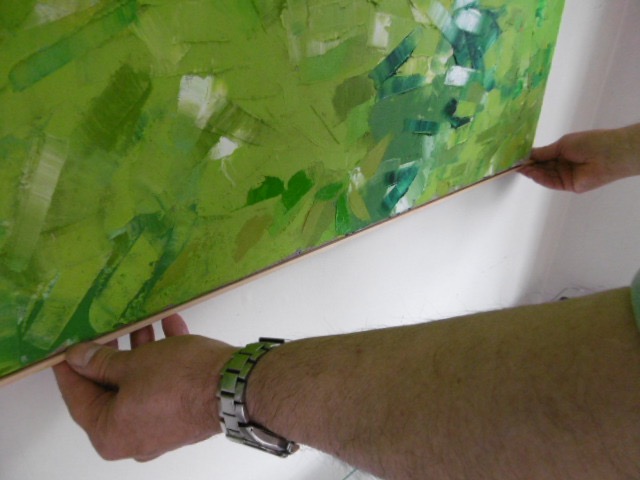
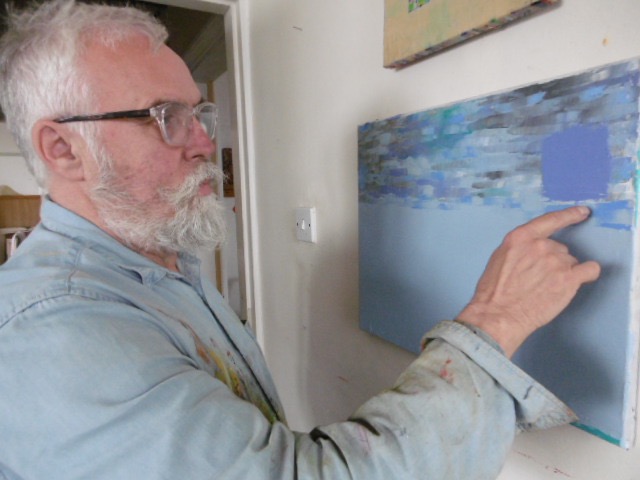
And the Landing…

